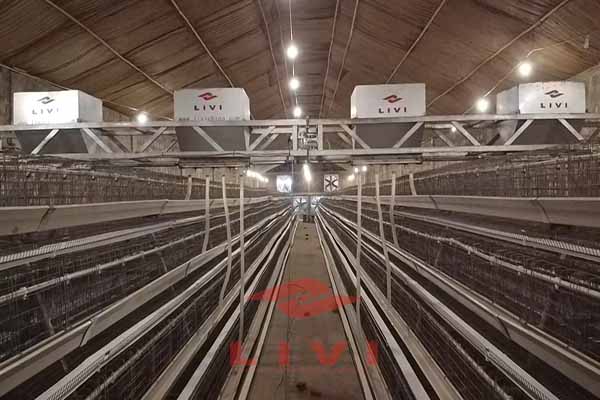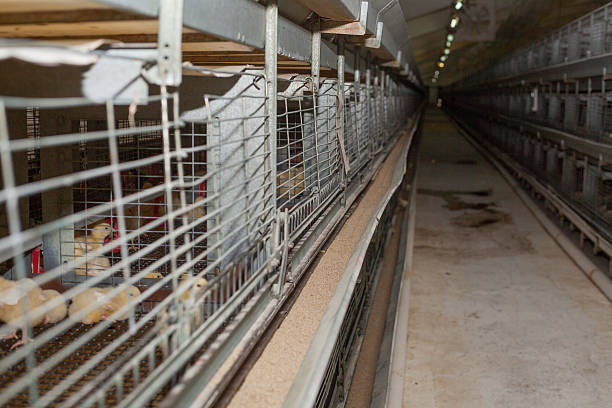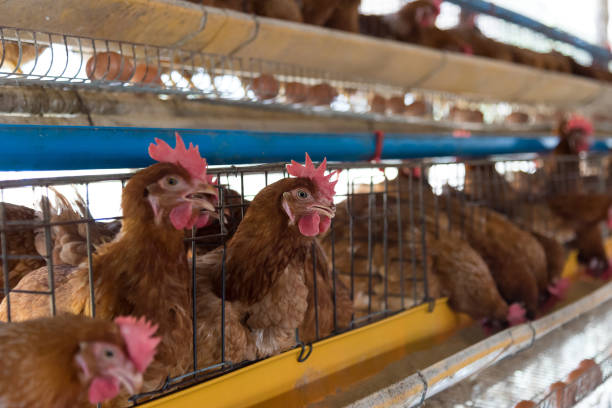Layer Cages: The Key to Efficient and Profitable Large-Scale Egg Production
Layer Cages: The Key to Efficient and Profitable Large-Scale Egg Production
For anyone serious about making a good living from egg production, layer cages are more than just housing – they’re the foundation of a smart, efficient, and profitable operation. In this comprehensive guide, we’ll break down everything you need to know about layer cages, from the different types available to the nitty-gritty of how they can boost your bottom line.
What are Layer Cages?
Layer cages, also known as battery cages or laying hen cages, are specialized housing systems designed specifically for egg-laying hens. These cages are typically made of galvanized steel wire mesh and are arranged in rows and tiers within a poultry house. Each cage houses several hens (typically ranging from 3 to 8, depending on the cage size and local regulations), providing them with easy access to food and water while facilitating efficient egg collection.
Why Choose Layer Cages? The Advantages

The popularity of layer cages stems from their ability to streamline egg production. Here’s a closer look at the key advantages:
Increased Egg Production: Layer cages create a controlled environment that optimizes egg laying. Hens are shielded from extreme weather, predators, and the pecking order squabbles that can disrupt egg production in free-range systems. This results in a more consistent and higher overall egg yield.
Improved Hygiene and Reduced Disease: The elevated wire mesh floors of layer cages allow droppings to fall away from the hens, minimizing contact with manure. This dramatically reduces the risk of disease outbreaks and keeps the hens cleaner. The controlled environment also makes it easier to implement biosecurity measures.
Efficient Space Utilization: Layer cages allow for high-density housing, maximizing the number of hens you can keep in a given space. This is particularly important for large-scale egg production where space is a valuable commodity.
Easier Management and Monitoring: With hens confined to cages, it’s much easier to monitor their health and behavior. Identifying sick or injured birds is quicker, and administering treatment becomes more efficient. Feeding and watering are also simplified, often automated for even greater efficiency.
Reduced Labor Costs: Automation is a major benefit of layer cage systems. Automated feeding, watering, and egg collection systems significantly reduce the need for manual labor, leading to lower operating costs.
Improved Egg Quality: Eggs laid in cages are generally cleaner and of higher quality than those laid on the floor or in nests. The cages protect the eggs from dirt, manure, and damage, ensuring they reach the consumer in optimal condition.
Types of Layer Cages: Finding the Right Fit
Not all layer cages are created equal. The best choice for you will depend on the scale of your operation, your budget, and your specific goals. Here’s a breakdown of the most common types:
A-Frame Cages: These are the most traditional and widely used type of layer cage. They are arranged in an A-shape, with tiers of cages stacked on top of each other. A-frame cages are relatively inexpensive and easy to install, making them a popular choice for small to medium-sized farms. However, they may require more manual labor for egg collection and manure removal.
H-Frame Cages: H-frame cages are a more modern and efficient design. They consist of horizontal rows of cages stacked vertically, resembling the letter “H”. H-frame cages offer better space utilization and can be easily automated for feeding, watering, egg collection, and manure removal. They are a good option for larger-scale operations looking to minimize labor costs.
Vertical or Stair-Step Cages: These cages are arranged in a vertical, stair-step configuration. This design allows for better airflow and light distribution throughout the poultry house. Vertical cages are often used in environments where ventilation is a concern.
Manure Removal Systems: Keeping Things Clean
Effective manure management is critical for maintaining a healthy environment for your hens and complying with environmental regulations. Fortunately, several manure removal systems can be integrated with layer cages:
Scraper Systems: These systems use mechanical scrapers to remove manure from beneath the cages. Scrapers are typically operated automatically and can be programmed to run on a regular schedule.
Belt Systems: Belt systems use conveyor belts to transport manure out of the poultry house. These systems are particularly effective for removing dry manure.
Flushing Systems: Flushing systems use water to flush manure from beneath the cages. These systems are typically used in conjunction with a lagoon or other wastewater treatment system.
Essential Features of High-Quality Layer Cages
When selecting layer cages, it’s crucial to prioritize quality and durability. Here are some key features to look for:
Galvanized Steel Construction: Galvanized steel is resistant to rust and corrosion, ensuring the cages can withstand the harsh environment of a poultry house.
Adequate Cage Size: Ensure the cages provide enough space for the hens to move comfortably and exhibit natural behaviors. Local regulations often specify minimum cage sizes per bird.
Proper Ventilation: Good ventilation is essential for removing ammonia and other harmful gases from the poultry house. Cages should be designed to allow for adequate airflow.
Easy Access to Food and Water: Hens should have easy and consistent access to food and water. Feeders and drinkers should be designed to minimize waste and contamination.

Egg Roll-Out System: An efficient egg roll-out system is crucial for collecting eggs quickly and safely. The system should be designed to prevent eggs from cracking or becoming dirty.
Maximizing Profitability with Layer Cages: Key Strategies
Investing in layer cages is just the first step. To truly maximize your profitability, you need to implement sound management practices. Here are some key strategies:
Optimal Stocking Density: Finding the right balance is crucial. Overcrowding leads to stress, disease, and reduced egg production. Understocking wastes valuable space. Consult with poultry experts to determine the optimal stocking density for your specific breed and cage type, and follow local guidelines.
Proper Nutrition: A well-balanced diet is essential for healthy hens and high egg production. Provide your hens with a high-quality layer feed that meets their nutritional needs. Consult with a poultry nutritionist to develop a customized feeding program.
Effective Disease Control: Implement a comprehensive biosecurity program to prevent disease outbreaks. Regularly monitor your hens for signs of illness and administer treatment promptly. Vaccinate your hens against common poultry diseases.
Lighting Management: Light plays a crucial role in regulating egg production. Maintain a consistent lighting schedule to stimulate egg laying. Gradually increase the light intensity and duration as the hens mature.
Temperature Control: Maintain a comfortable temperature range in the poultry house. Hens are most productive when the temperature is between 60°F and 75°F (15°C and 24°C). Use ventilation and heating systems to regulate the temperature as needed.
Water Quality: Always provide your hens with clean, fresh water. Regularly clean and disinfect your water lines to prevent the growth of bacteria and algae.
The Future of Layer Cages: Innovations and Trends
The egg industry is constantly evolving, and layer cage technology is keeping pace. Here are some emerging trends and innovations:
Enriched Cages: Enriched cages provide hens with more space and amenities, such as perches, nesting areas, and dust baths. These cages are designed to improve hen welfare while still maintaining the efficiency of cage systems.
Automated Monitoring Systems: These systems use sensors and data analytics to monitor hen health, behavior, and egg production in real-time. This allows farmers to identify problems early and make data-driven decisions.
Sustainable Cage Designs: Manufacturers are developing more sustainable cage designs that reduce environmental impact. This includes using recycled materials, improving energy efficiency, and minimizing waste.
Conclusion: Layer Cages as an Investment in Your Future
Layer cages are a significant investment, but one that can pay off handsomely with increased efficiency, improved hygiene, and higher egg production. By carefully selecting the right type of cage, implementing sound management practices, and staying abreast of the latest innovations, you can create a profitable and sustainable egg production operation. Don’t just think of layer cages as a cost; view them as the essential building block for a thriving egg business. They are the key to unlocking the full potential of your flock and achieving long-term success in the competitive egg market. If you’re ready to take your egg production to the next level, investing in a quality layer cage system is a smart move that will benefit your bottom line for years to come.





